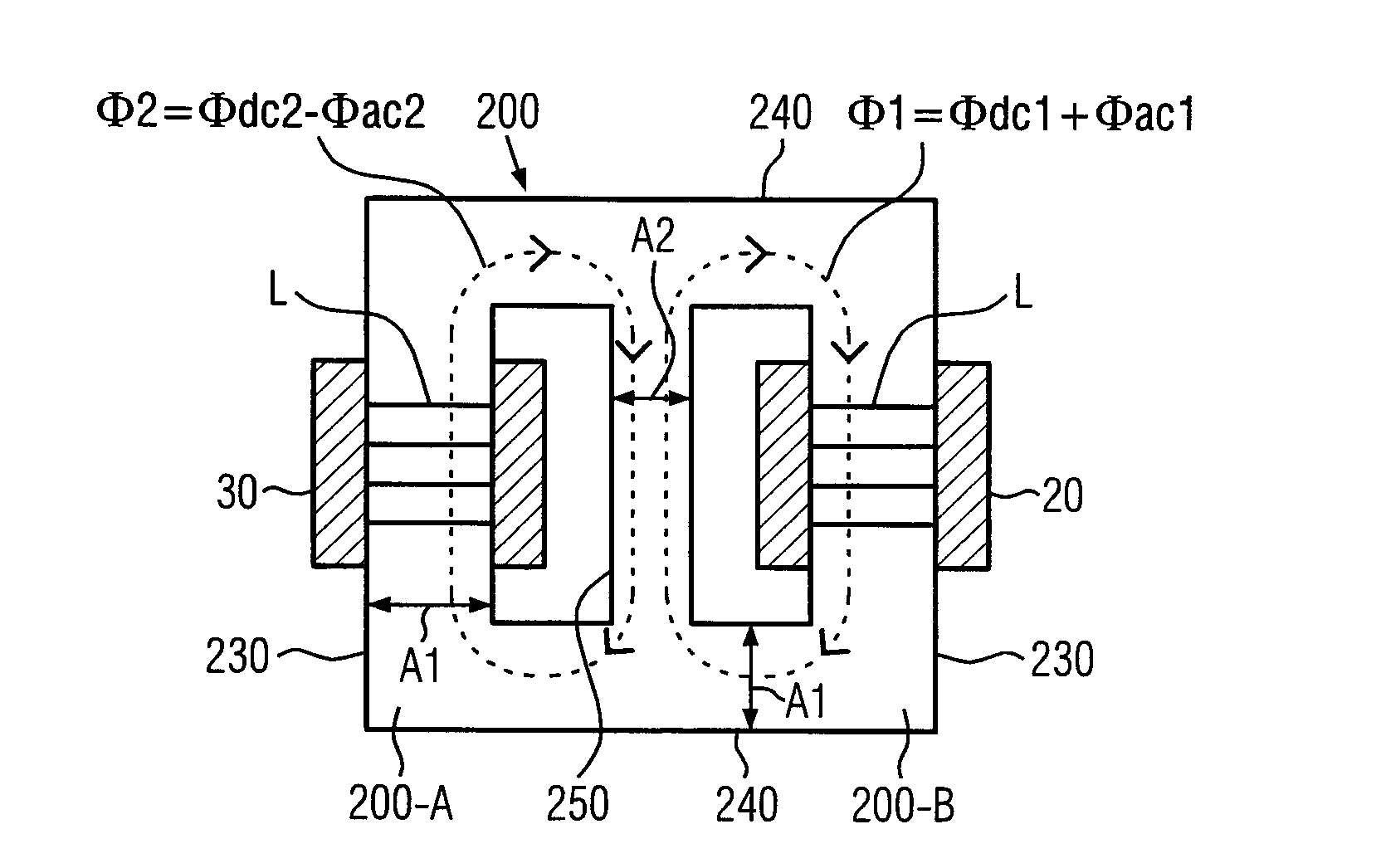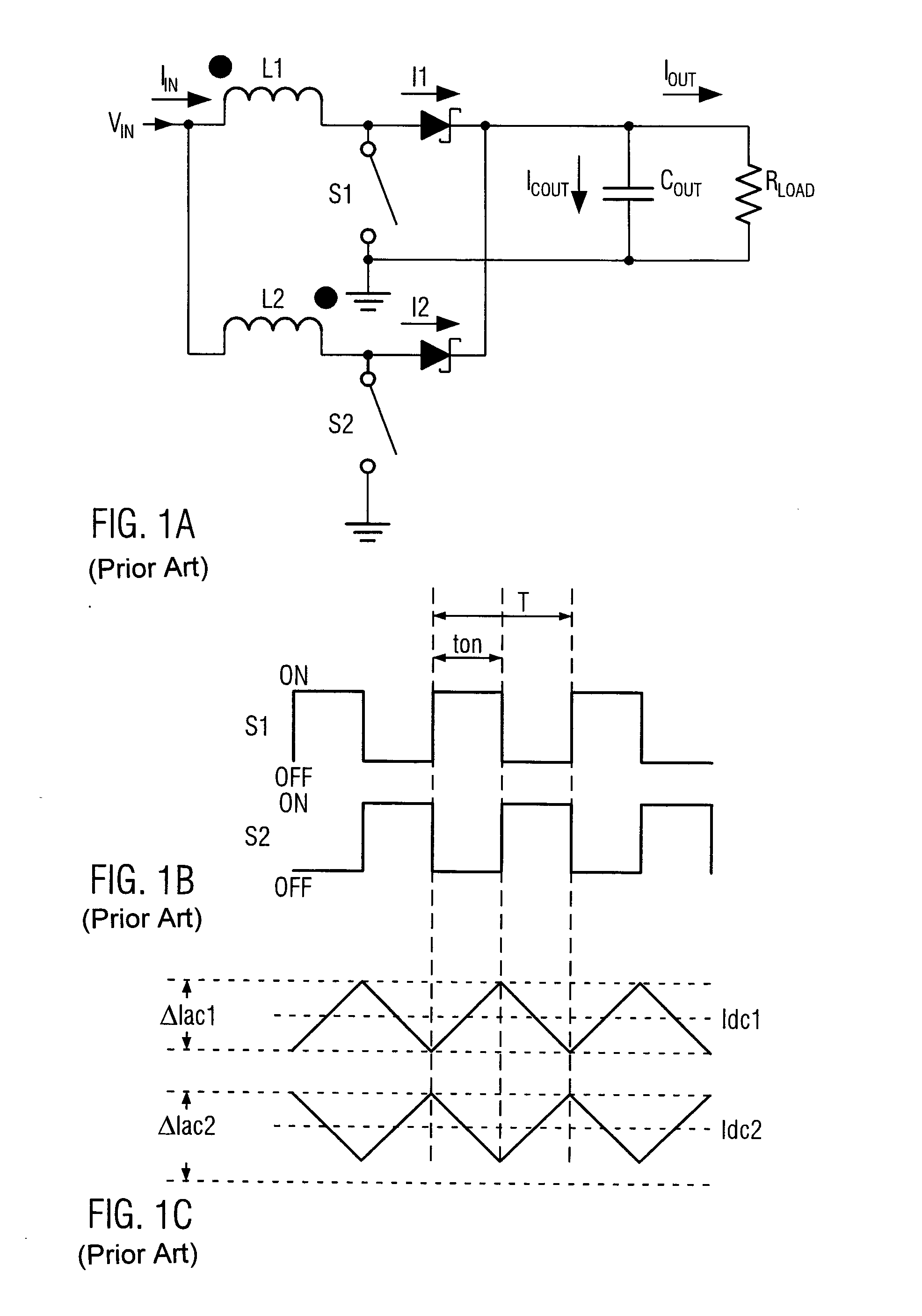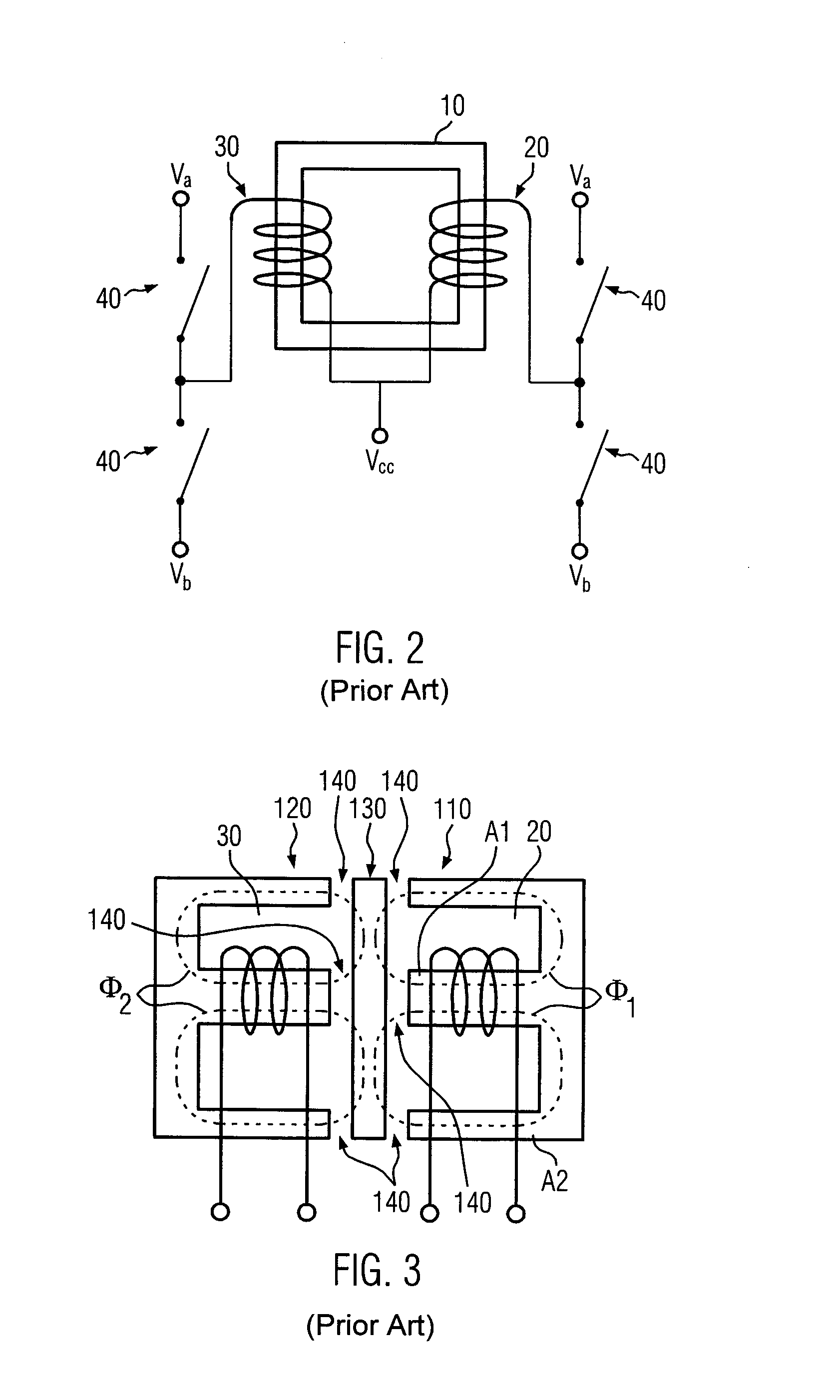Choke and choke core
a choke core and choke core technology, applied in the direction of transformer/inductance details, inductances with magnetic cores, inductances, etc., can solve the problems of large losses in the grid, grid dimensioning is too large, ripple current components do not precisely compensate each other, etc., to achieve efficient energy transport, low weight, and high efficiency
- Summary
- Abstract
- Description
- Claims
- Application Information
AI Technical Summary
Benefits of technology
Problems solved by technology
Method used
Image
Examples
first embodiment
[0043]FIG. 5 shows an implementation of the present invention with two E-shaped formed components 210 and 220, which are connected such that their free ends meet. To illustrate the E-shape in FIG. 5 larger gaps L1, L2 and L3 between the free ends of the two E-shaped parts 210 and 220 are shown. When implementing, as far as possible, no gaps L1, L2 and L3 should occur in order to avoid undefined air gaps, i.e. the ending surfaces on the free ends of the E-shaped parts have to be manufactured so precisely, that they lie in one plane, so that no air gaps occur. Air gaps are exemplarily selectively introduced in the lateral legs 230 in the area of the coils 20 and 30. The cross section A2 of the middle leg 250 is, as explained in detail above, smaller than the cross section A1 of the lateral legs 240 and 230.
[0044]In order to avoid a situation, as it can occur with E-shaped parts with the three gaps L1, L2 and L3, two U-shaped core parts 260 and 270 can be used, which are connected suc...
third embodiment
[0045]FIG. 6A shows a schematic top view of a core from two U-shaped parts 260 and 270 with a middle leg 250 according to a second and third embodiment of the present invention. In FIG. 6A the meeting edges of the free ends of the U-parts 260 or 270 are not visible. The coils 20 and 30 are positioned on the coils carrying lateral legs 230 of the core. The middle leg 250 fills the gap between the coils 20 and 30 and also forms a magnetic short-circuit between the lateral legs 240, so that two magnetic loops are formed. The air gap L in the lateral legs 230 in the area of the coils 20 and 30 leads to an operation outside of the magnetic saturation in the lateral legs and, at the same time, to a lower coupling of less than one percent between the two loops, respectively loops 20 and 30.
[0046]FIG. 6B shows a perspective view of the scheme of FIG. 6A according to a second embodiment with an extracted middle leg 350. FIG. 6B shows only the core arrangement without the coil windings 20 and...
PUM
| Property | Measurement | Unit |
|---|---|---|
| power factor | aaaaa | aaaaa |
| frequencies | aaaaa | aaaaa |
| magnetic resistance RMA | aaaaa | aaaaa |
Abstract
Description
Claims
Application Information
 Login to View More
Login to View More - R&D
- Intellectual Property
- Life Sciences
- Materials
- Tech Scout
- Unparalleled Data Quality
- Higher Quality Content
- 60% Fewer Hallucinations
Browse by: Latest US Patents, China's latest patents, Technical Efficacy Thesaurus, Application Domain, Technology Topic, Popular Technical Reports.
© 2025 PatSnap. All rights reserved.Legal|Privacy policy|Modern Slavery Act Transparency Statement|Sitemap|About US| Contact US: help@patsnap.com



